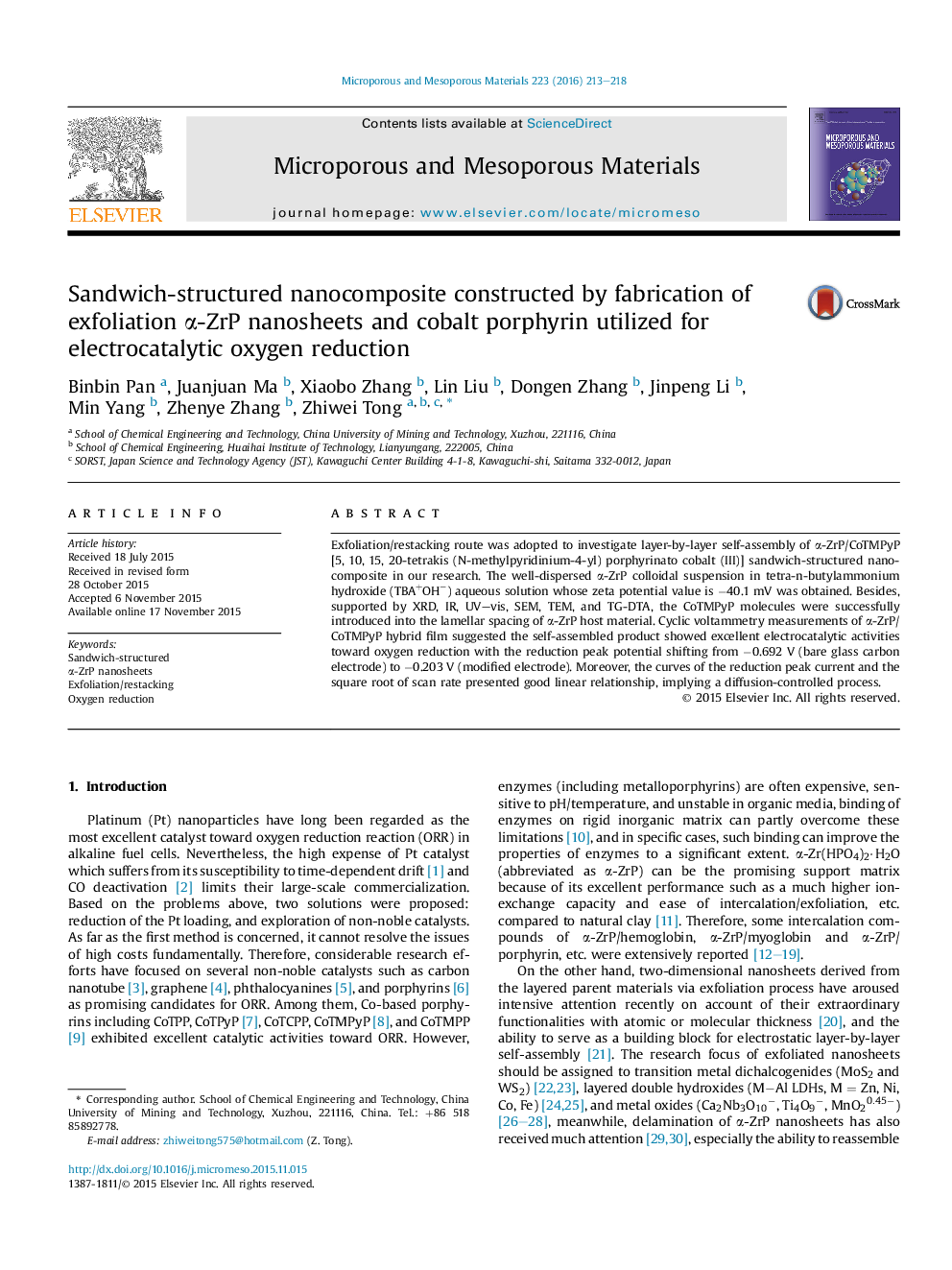| Article ID | Journal | Published Year | Pages | File Type |
|---|---|---|---|---|
| 72295 | Microporous and Mesoporous Materials | 2016 | 6 Pages |
•A simple and rapid method of the exfoliation/restacking route was adopted to fabricate α-ZrP/CoTMPyP laminar nanocomposite.•The zeta potential value of α-ZrP colloidal dispersion was −40.1 mV, indicating that the colloidal dispersion was stable and well dispersed.•The excellent electrocatalytic performance of α-ZrP/CoTMPyP hybrid film on oxygen reduction with the reduction peak potential shifting from −0.692 V (bare glass carbon electrode) to −0.203 V (modified electrode).•The results of electrochemical measurements indicated that oxygen was reduced to H2O2 via two-electron transfer.
Exfoliation/restacking route was adopted to investigate layer-by-layer self-assembly of α-ZrP/CoTMPyP [5, 10, 15, 20-tetrakis (N-methylpyridinium-4-yl) porphyrinato cobalt (III)] sandwich-structured nanocomposite in our research. The well-dispersed α-ZrP colloidal suspension in tetra-n-butylammonium hydroxide (TBA+OH−) aqueous solution whose zeta potential value is −40.1 mV was obtained. Besides, supported by XRD, IR, UV–vis, SEM, TEM, and TG-DTA, the CoTMPyP molecules were successfully introduced into the lamellar spacing of α-ZrP host material. Cyclic voltammetry measurements of α-ZrP/CoTMPyP hybrid film suggested the self-assembled product showed excellent electrocatalytic activities toward oxygen reduction with the reduction peak potential shifting from −0.692 V (bare glass carbon electrode) to −0.203 V (modified electrode). Moreover, the curves of the reduction peak current and the square root of scan rate presented good linear relationship, implying a diffusion-controlled process.
Graphical abstractFigure optionsDownload full-size imageDownload as PowerPoint slide
